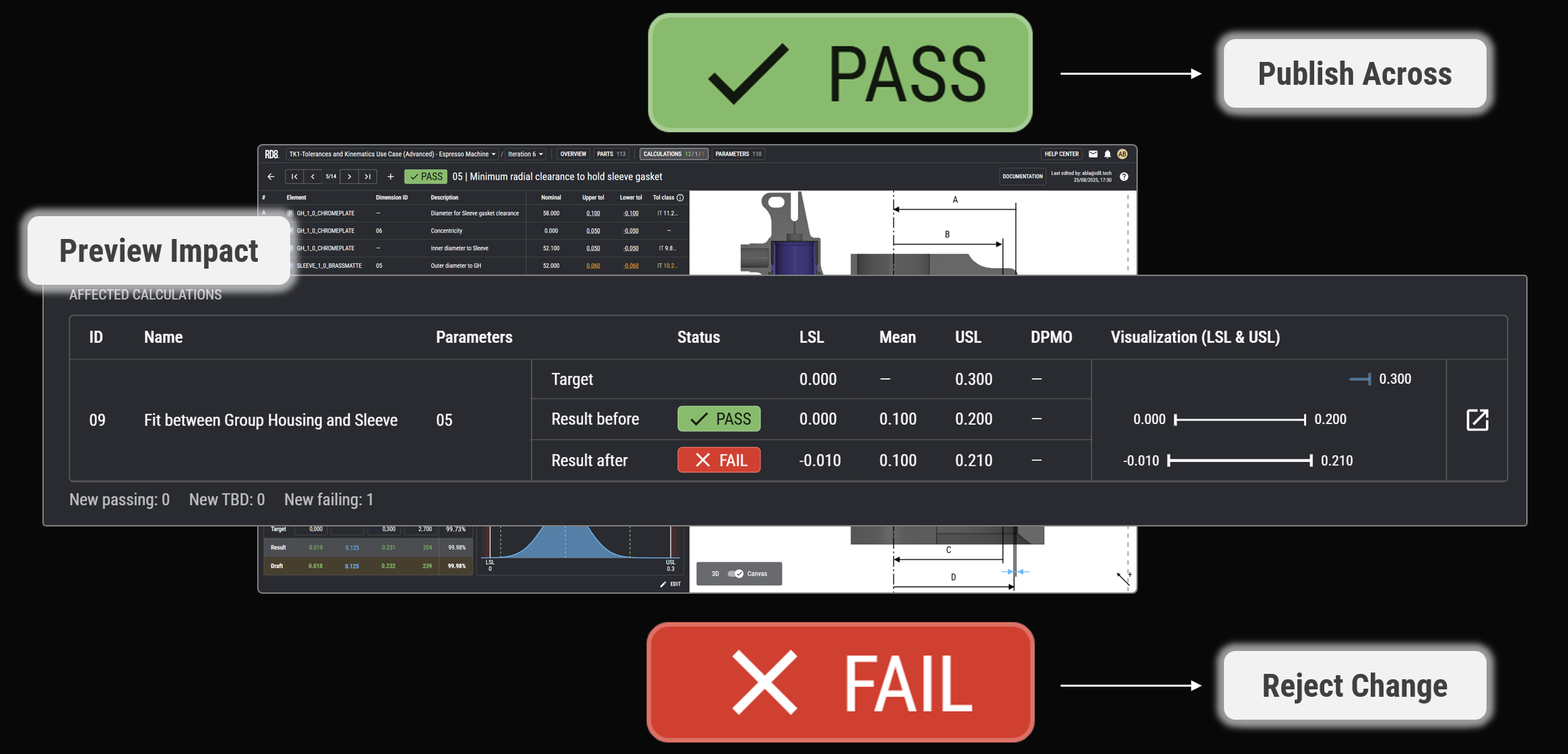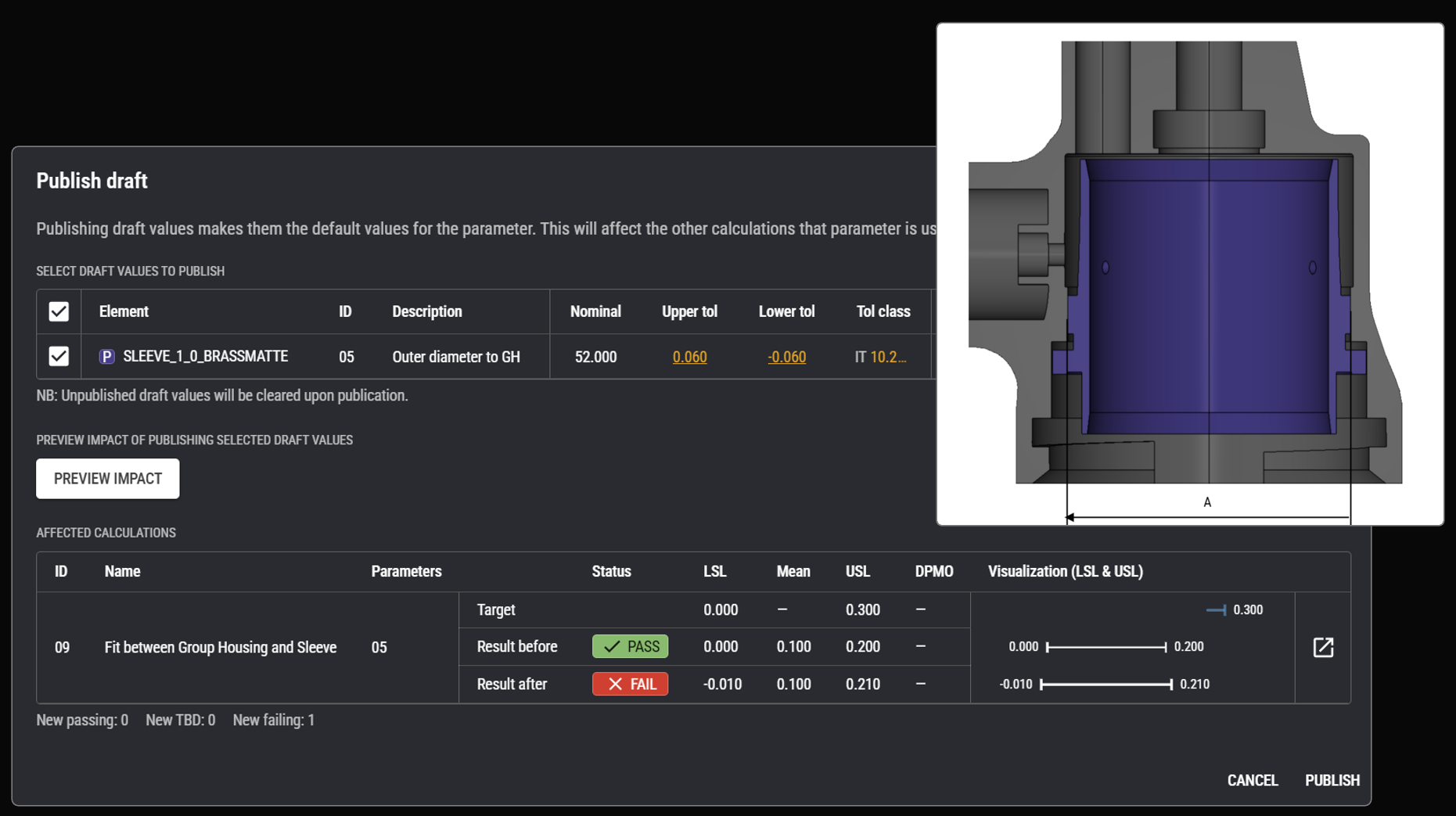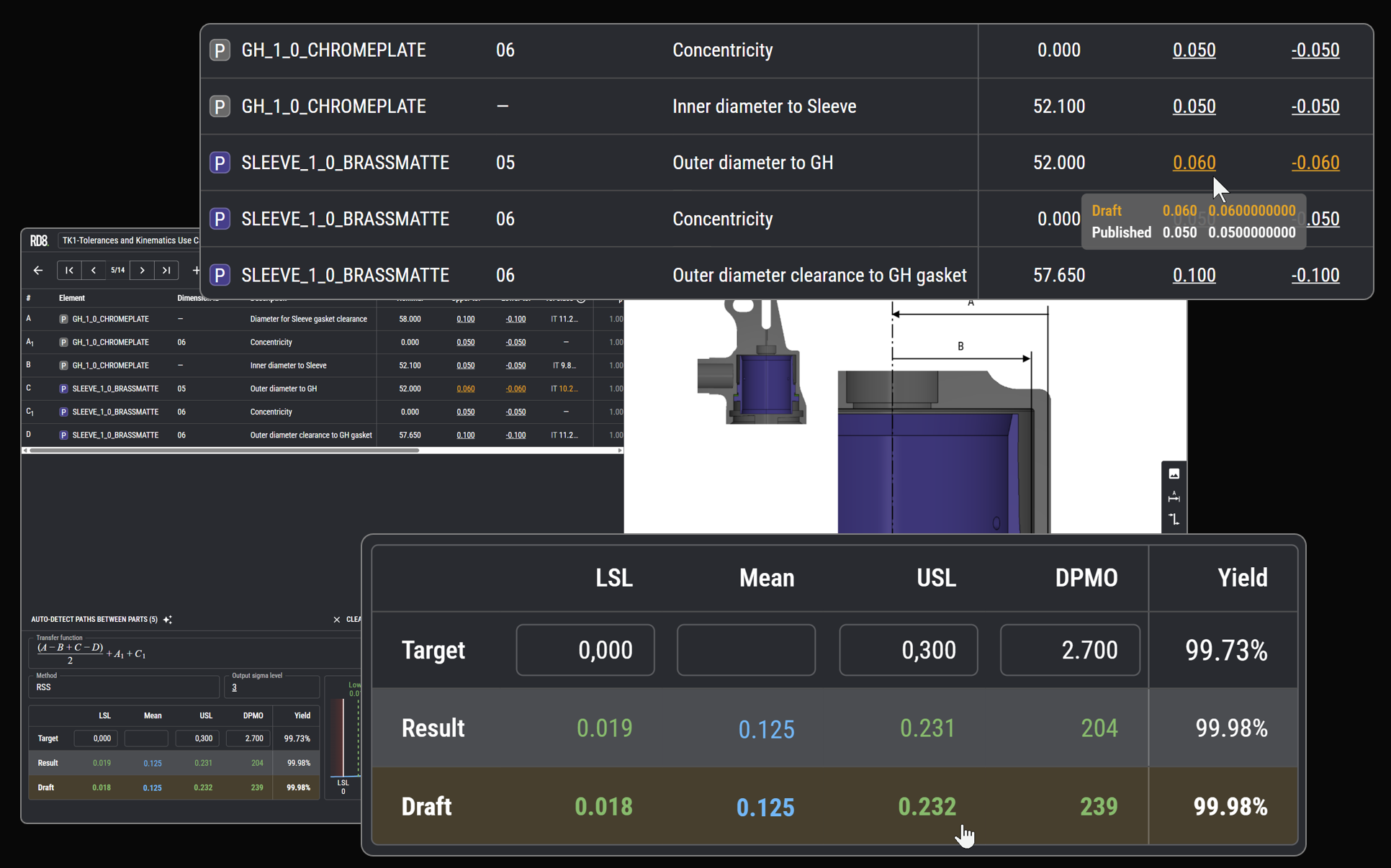Live Parameter Impact Evaluation & Collaboration
Instantly preview how parameter and tolerance changes will affect all your calculations analyses before committing updates. Collaborate with your team in real time on live 3D models - no more outdated spreadsheets or guesswork.

See the Effect of Any Parameter Change Before Publishing Across
RD8 lets you evaluate and preview the impact of design parameter changes across all related tolerance calculations before you publish updates.
Catch costly mistakes and loosen tolerances early by seeing exactly which stack-ups and performance metrics will be affected. Make confident decisions for tolerance parameters used in multiple calculations without breaking other parts of the analysis - and without endless “what if” email chains.

Live, Multi-User Collaboration on a Shared 3D Model
Work with your colleagues on the same live model and tolerance data - at the same time.
Changes appear instantly for every team member, so you can discuss trade-offs and make adjustments without the delays of file handovers or version confusion. Whether in R&D, manufacturing, or quality, everyone works on the same source of truth.
Always in Sync with the Latest Design Parameters
No more manual updates and scanning through endless Excel sheets. RD8’s 3D-based approach means your tolerance analysis stays synced with the latest design iteration.
When a dimension or parameter changes in the model, you’ll know instantly - and you can choose whether to accept, reject, or adjust before locking it in and publishing for team members.


Draft Mode - Explore Ideas Before You Commit
Test ideas without consequences. In Draft Mode, you can adjust parameters, explore alternative designs, and instantly see the results - all in a safe, sandbox environment.
Run “what if” scenarios, compare different options, and share your findings with the team before committing to the live analysis. Once you’re confident, publish with a single click, knowing your decision is backed by data.
See our Tolerance Analysis Stack-Up Detection in Action
Benefits of using RD8 for Tolerance Analysis
Discover how RD8 can ease your Tolerace Analysis and Variation Management
Complete all-in-one Tolerance Analysis software
All features
Frequenly asked Questions
Because parts and parameters are reused across multiple tolerance stack-ups, a single change can ripple through the entire design without warning.In Excel, when you update a tolerance specification, it only changes locally in that one sheet. If the same parameter is used in other stack-ups, those won’t update automatically — leaving your calculations out of sync and increasing the risk of errors. On top of that, there’s no built-in traceability, so you won’t see how your change affects your colleagues’ work on the same assembly.
With RD8, every parameter is connected.
When you update a tolerance, RD8 shows you the potential impact before applying it — across your own stack-ups and your colleagues’. That way, changes are controlled, synchronized, and transparent.
In Excel, teamwork on tolerance stack-ups is frustrating. Only one engineer can realistically work in the sheet at a time, and a single parameter change can accidentally break a colleague’s work without warning. That’s why collaboration is one of the hardest parts of tolerance analysis.
Best practice is to use a dedicated tool like RD8.
With RD8, several engineers can work on related tolerance stack-ups simultaneously. Every parameter update instantly shows its impact — both on your own calculations and your colleagues’. If another tolerance stack starts failing due to your change, you can review it together before publishing. This way, the team stays synchronized, and failures are caught early.
With RD8, there’s no upper limit.
Unlike Excel, where calculations and file handling restrict collaboration, RD8 runs all calculations — including heavy methods like Monte Carlo simulations — on the server side. This means your whole engineering team can work together on the same tolerance project without slowing down.You can always see your colleagues’ drafts, shared parameters, and get a live overview of the status of every tolerance stack-up in the project. Collaboration is seamless, scalable, and built for real engineering teams.
Get a Demo

By submitting, you accept RD8's Privacy Policy and Terms of Service.
